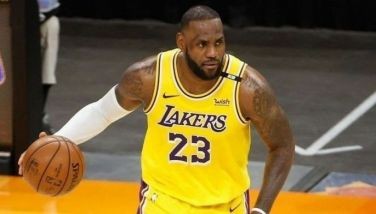Art and artists

For as long as humans have made art, it’s likely that its relevance in our lives has been debated. Our earliest distinguishable ancestors living as hunter-gatherers would have seemingly more pressing concerns regarding food, shelter, defense and procreation. And yet, even at a subsistence level of existence, art was made. We now have evidence of paintings made as far back as 35,000 years ago with the dating of the images in Sulawesi caves in Indonesia. And that’s only when we consider direct evidence of art: there’s evidence of pigments being used as early as 164,000 years ago, as well as items that appear to have been deliberately holed or engraved like jewelry… and of course, if there were songs and music made in those bygone eras, we have no way of knowing for certain. But it says a lot about our human need for art that even when society was at its most basic, there was space for art – if you’re an artist, try to remember that the next time one of your older relations asks when you’ll be getting a “real job.” (Likely right after telling you that you’ve gained weight, and asking when you’ll get married.)
But the fact that many artists still have those conversations, still deal with that kind of dismissal of their work, shows that in many ways art is still taken for granted. Maybe so many people still take art for granted in our modern age because there is so much of it. The masterpieces of the past have been sought and preserved, and there has been much progress in making the experience of them available in some form to as wide an audience as possible. Advances in technology and technique have made it possible for many more people to find a way to make art, share it and find a way to make a living out of it. People look around and see all of this art available for consumption at a touch of their fingertips, and they think that they have all the art they need and that artists are a dime a dozen.
Of course, it usually only takes a little digging into a person’s preferences to show that this isn’t exactly true. You can’t tell a fan of a K-Pop band that they can simply listen to standards instead, and you can’t show someone expecting the latest Spider-Man movie a documentary about the Sistine Chapel. Art is not fungible, it’s not interchangeable. Each work of art is unique, because each work of art is, the art critic and philosopher Arthur Danto said, an “embodied meaning.”
It’s why our hunger for art is both universal and subjective – we all need it, but we all resonate and appreciate different types of art. The meaning of art is not only delivered by the artist, not only found in the art, but brought by the audience themselves in all their diversity. It’s why arguments about what is or what is not art still erupt whenever some new form is created, because we find it difficult to see something as art when we cannot find the meaning in it, or when it evokes no meaning for us – even when it’s clear that other people feel differently.
What makes art intrinsically unique – what makes art art – is also what makes it important to support artists at every level of their career, in every field where art is made. Every artist brings to their art not only their talents and skills, but their own lived experiences, their own meaning. Each artist that gets to create enriches the shared culture of humanity, not because it is a new Mona Lisa or Symphony No. 40, but because it is not – it is something unique unto itself. The subjective quality of art has nothing to do with its universal importance, and so the subjective talents of an artist have nothing to do with the universal need to support artists as a whole.
This year’s Art Fair Philippines (which finished a few days ago) was a vibrant example of local art and artists, many at the peak of their abilities. But art is not just paintings made by masters, or words written down by best-selling authors. As the digital installations in the Art Fair show, art can emerge in new ways, and new technologies. Art can be found in the long-held traditions of our indigenous cultures, in dances made for social media shorts, in the poetry of resistance and in the contours of a hairstyle. When you see art as embodied meaning, you realize the true breadth and diversity of its forms.
And the best way to support art in all these forms is to support artists in all their diversity. We can do this directly through buying their work of course, but the focus of that is only for art that can be bought, and artists who have already achieved a certain level of talent and skill. If we want to truly support artists, we must make it easier for people to choose to be artists. This requires institutionalized support, one that starts at the grassroots and builds upwards.
There is still much room to create programs for teaching and mentorship, as well as spaces and opportunities for artists to hone their talents and practise their art without being expected to be perfect. We must make artistic spaces inclusive and safe for women, the disabled and the marginalized. We must craft legislation that will safeguard their intellectual property rights, and allow them the means to seek fair profit from their creations if they should so choose. We must create avenues by which they can speak out, organize and effectively communicate their needs.
Art is an essential element of what makes us humans. But our appreciation for art must not leave behind our appreciation for the humans behind every piece of work. Art is of the utmost importance… but so too, are artists.
- Latest
- Trending




























